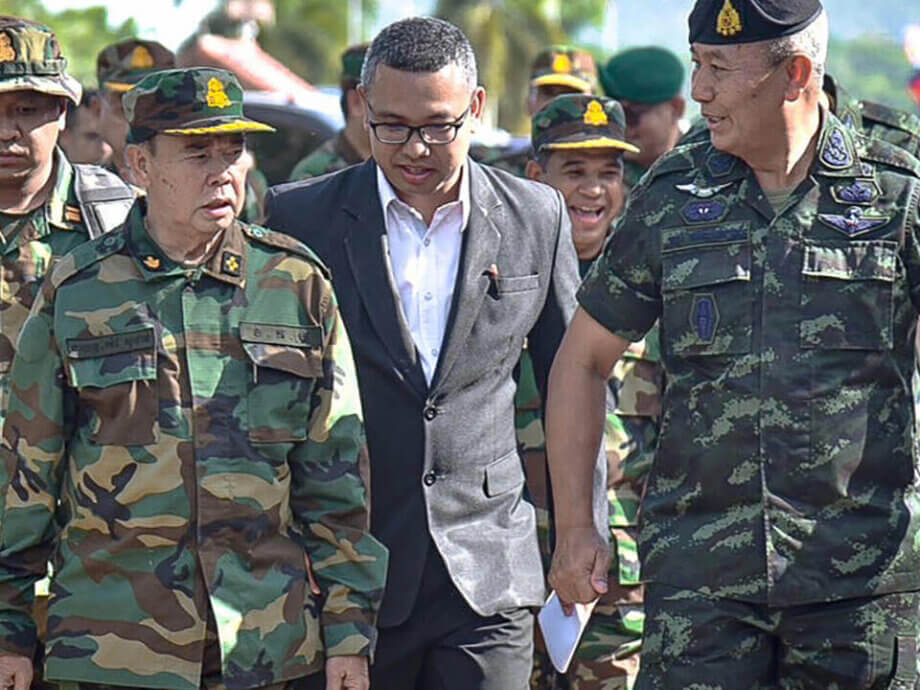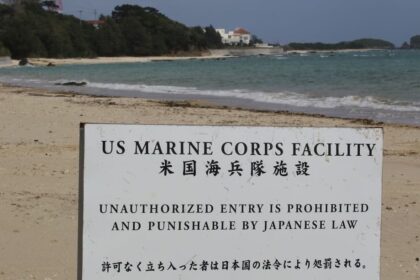Deadly Skirmish Rekindles a Century-Old Dispute
A recent deadly clash between Thai and Cambodian troops in the dense jungles of the Emerald Triangle has reignited longstanding tensions along their disputed border. The incident, which left one Cambodian soldier dead and prompted both sides to reinforce their military presence, has not only unsettled local communities but also drawn in the interests of global powers, notably the United States and China. As both nations scramble to de-escalate, the standoff exposes deep historical wounds, fragile political dynamics, and the growing influence of foreign actors in Southeast Asia.
- Deadly Skirmish Rekindles a Century-Old Dispute
- What Sparked the Latest Border Crisis?
- Historical Roots: Colonial Borders and Nationalist Sentiment
- Military Maneuvers and Political Tensions
- Superpower Rivalry: The US-China Factor
- Domestic Politics: Civil-Military Relations and Nationalism
- Impact on Border Communities and the Economy
- Scenarios and Regional Implications
- Foreign Interests and Strategic Calculations
- In Summary
What Sparked the Latest Border Crisis?
The immediate trigger for the current crisis was a face-to-face gunfight on May 28, 2025, at the Chong Bok pass, a rugged and undemarcated section of the Thai-Cambodian border. According to Thai officials, Cambodian troops were digging a 650-meter trench in disputed territory—an act Thailand viewed as encroachment. When Thai soldiers approached to discuss the matter, a firefight erupted, resulting in the death of a Cambodian soldier. Each side blames the other for firing first, and both have since accused the other of repeated provocations and territorial violations.
The disputed area, part of the so-called Emerald Triangle where Thailand, Cambodia, and Laos meet, is notorious for its lawlessness. The region is a haven for smugglers, illegal loggers, traffickers, and fugitives, and is also home to ancient Hindu temples such as Ta Moan Thom and Preah Vihear—sites that have been flashpoints in previous border disputes.
Following the clash, both countries rapidly reinforced their border positions. Villagers dug bunkers in schoolyards, and thousands of travelers were stranded as border checkpoints were temporarily closed or had their hours drastically reduced. The Thai military displayed photos of the trench and later, images showing it filled in, claiming Cambodia had agreed to restore the area to its natural state as part of a surprise agreement to de-escalate.
Historical Roots: Colonial Borders and Nationalist Sentiment
The roots of the Thai-Cambodian border dispute stretch back over a century, to when French colonial authorities drew the boundaries in 1907. Many sections remain undemarcated, leading to periodic flare-ups. The most prominent flashpoint is the Preah Vihear temple, a UNESCO World Heritage site perched atop a cliff. In 1962, the International Court of Justice (ICJ) awarded the temple to Cambodia, but surrounding territory remains contested. The issue resurfaced violently in 2008–2011, resulting in artillery exchanges and casualties on both sides. In 2013, the ICJ reaffirmed Cambodia’s sovereignty over the temple, but the border remains a source of nationalist fervor in both countries.
Nationalist rhetoric has again surged in the wake of the latest incident. In Cambodia, the death of a soldier has galvanized public support for Prime Minister Hun Manet’s government, even among critics. In Thailand, right-wing opposition groups have accused the civilian-led government of being too conciliatory, tapping into deep-seated anxieties about national sovereignty and the military’s role in politics.
Military Maneuvers and Political Tensions
Both governments have issued strong statements while emphasizing their commitment to dialogue. Thailand’s Defense Minister Phumtham Wechayachai announced that the military is prepared for a “high-level operation” if sovereignty is violated, even as the government pursues a peaceful resolution through the Joint Boundary Commission (JBC), scheduled to meet on June 14. The Thai army has taken control of all border checkpoints, restricting crossings and trade in response to what it describes as repeated Cambodian incursions.
Cambodia, for its part, insists it is acting in self-defense and has not withdrawn troops from areas it considers its own. Prime Minister Hun Manet has vowed to refer disputes over four border areas to the ICJ, even if Thailand refuses to participate. Both sides have accused each other of violating ASEAN’s Treaty of Amity and Cooperation, which underpins peaceful coexistence among Southeast Asian nations.
Despite the tough talk, there are signs of de-escalation. Both militaries have reportedly agreed to return to pre-confrontation positions, and officials on both sides have called for calm. However, the situation remains volatile, with the potential for further skirmishes or accidental escalation.
Superpower Rivalry: The US-China Factor
Beyond the local and historical dimensions, the Thai-Cambodian border dispute is increasingly entangled in the broader rivalry between the United States and China. Both countries have cultivated close military and economic ties with the superpowers, but in different ways.
Cambodia’s Tilt Toward China
China is Cambodia’s largest source of military aid, providing tanks, armored vehicles, air defense training, and funding for major infrastructure projects. The two countries recently concluded the “Golden Dragon” military exercises, featuring 2,000 personnel and even robot combat dogs. China is also upgrading Cambodia’s Ream Naval Base, raising concerns in Washington about Beijing’s expanding military footprint in the region. President Xi Jinping’s recent visit to Phnom Penh further cemented the relationship, promising more aid and investment.
Thailand’s US Alliance
Thailand, meanwhile, remains a key US ally in Southeast Asia. The Thai military is US-trained, and the country hosts annual joint exercises with the Pentagon. US Navy ships, including nuclear-powered aircraft carriers, regularly dock at Thai ports, bolstering the US Pacific Fleet’s presence. American officials have expressed hope that a US Navy ship will soon visit Cambodia’s Ream Naval Base, though this remains uncertain given China’s influence.
This alignment has led some analysts to view the border clash through a “US vs. China” lens, with each superpower seeking to shore up its regional partners. However, there is no evidence of direct foreign involvement in the recent skirmish. Instead, the rivalry plays out in the background, shaping the strategic calculations of both Bangkok and Phnom Penh.
Domestic Politics: Civil-Military Relations and Nationalism
The border crisis has exposed the delicate balance between Thailand’s civilian government and its powerful military. Prime Minister Paetongtarn Shinawatra, daughter of ousted former leader Thaksin Shinawatra, has emphasized diplomacy and behind-the-scenes negotiations. However, the military has signaled a readiness to act forcefully if necessary, reflecting a history of coups and political intervention when the armed forces are dissatisfied with civilian leadership.
Paul Chambers, a Southeast Asia expert, notes that the Thai army “would prefer a hawkish response,” and that rising tensions could strain civil-military relations. However, other analysts argue that, for now, the government and military remain aligned in seeking a peaceful resolution, with the military’s tough rhetoric serving as a deterrent rather than a prelude to escalation.
In Cambodia, the government has used the crisis to rally nationalist sentiment and consolidate support. The death of a soldier has been framed as a defense of national sovereignty, boosting the popularity of the ruling Cambodian People’s Party (CPP) and Prime Minister Hun Manet, who succeeded his father, Hun Sen, in 2023.
Impact on Border Communities and the Economy
The human cost of the standoff is most acutely felt in the border regions. Local communities, dependent on cross-border trade and daily movement, have been disrupted by checkpoint closures and heightened security. In Aranyaprathet, a major Thai trading hub, merchants and travelers face uncertainty as operating hours are slashed and restrictions tighten. Thai nationals are barred from crossing for tourism or gambling, and Cambodian traders face reduced border pass validity.
Border trade between the two countries is significant, totaling about 175 billion baht ($5.4 billion) in 2024. Japanese and other foreign companies have invested heavily in manufacturing hubs on both sides of the border, relying on smooth logistics for supply chains. Any prolonged closure or escalation could have ripple effects across industries, from automotive parts to retail, and could depress economic activity in both countries.
Authorities have pledged to balance security with the needs of local populations, allowing humanitarian transfers and essential trade to continue where possible. However, the situation remains precarious, with the potential for further disruption if tensions flare again.
Scenarios and Regional Implications
Analysts outline several possible scenarios for the coming months:
- Diplomatic Escalation Without Armed Conflict: The most likely outcome is continued harsh rhetoric, temporary border closures, and nationalist protests, but no full-scale war. Economic interdependence and ASEAN mediation may help contain the crisis.
- Localized Skirmishes: Unplanned confrontations between border patrols could escalate into brief armed clashes, as seen in previous years.
- Hybrid Conflict: Both countries could engage in information warfare, economic boycotts, and the use of proxies, while avoiding direct war. External actors could exploit the situation to advance their interests.
- Third-Party Mediation: ASEAN, China, the US, or Japan could intervene diplomatically to prevent destabilization, though this depends on the willingness of both governments to internationalize the issue.
Even minor clashes risk encouraging other border disputes in Southeast Asia, undermining ASEAN’s stability. Humanitarian impacts could include refugee flows, disrupted trade, and human rights violations, especially against migrants. The crisis also tests ASEAN’s non-interference principle and the bloc’s ability to mediate regional conflicts.
Foreign Interests and Strategic Calculations
China, the US, Vietnam, Japan, and South Korea all have stakes in the outcome:
- China seeks to keep Cambodia as a loyal partner and counter US influence, potentially increasing its military presence if the crisis escalates.
- The US supports Thailand and frames itself as a stabilizing actor, but has limited leverage in Cambodia.
- Vietnam watches warily, concerned about instability and the risk of Cambodia drifting further into China’s orbit.
- Japan and South Korea prioritize economic stability and would likely support ASEAN-led conflict resolution to protect their investments.
For now, the risk of a major war remains low, but the potential for localized conflict and proxy dynamics is real, especially amid political instability and foreign power competition.
In Summary
- The Thai-Cambodian border clash was triggered by a deadly skirmish over a disputed trench, reviving a century-old territorial dispute.
- Both sides have reinforced their military presence, restricted border crossings, and issued strong statements, but have also agreed to some de-escalation measures.
- The crisis is rooted in historical grievances, nationalist sentiment, and the ambiguous legacy of colonial-era borders.
- Superpower rivalry between the US and China shapes the strategic context, with each backing their respective partners in the region.
- Domestic politics, especially civil-military relations in Thailand and nationalist mobilization in Cambodia, influence the crisis’s trajectory.
- Border communities and supply chains face significant disruption, with potential economic fallout if tensions persist.
- Analysts predict continued hybrid tensions, with the risk of localized skirmishes but no full-scale war, as ASEAN and external powers seek to mediate.
- The situation remains fluid, with the next round of talks at the Joint Boundary Commission seen as a key test of both countries’ commitment to peace.












